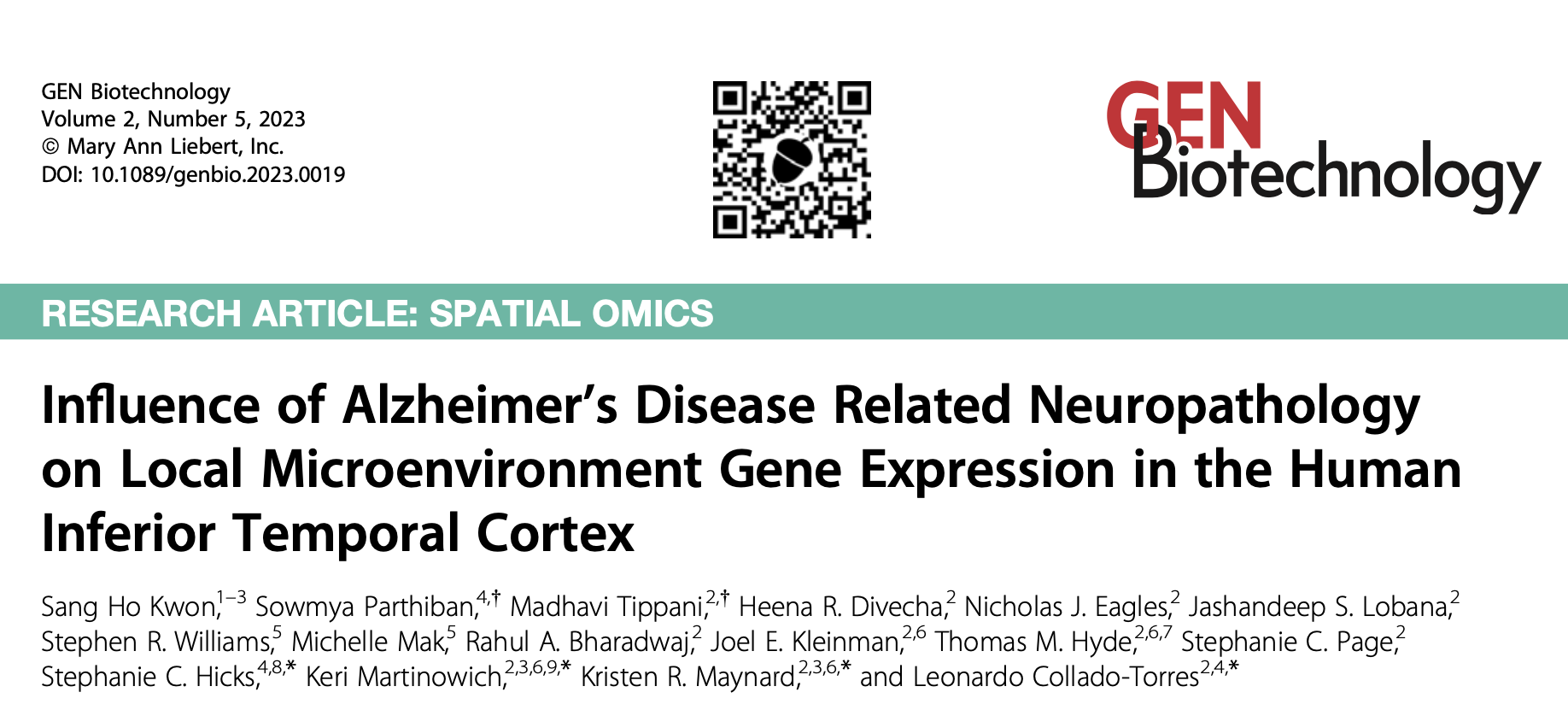Our first adventure with Visium Spatial Proteogenomics
By Sang Ho Kwon.
Recent advancements in spatially-resolved transcriptomics (SRT) technologies have ushered in a new era of possibilities for biological research. These technologies offer the unique ability to map biomolecular information within the native tissue architecture. Preserving the spatial resolution of genome-wide gene expression allows researchers to obtain a more holistic view of the tissue microenvironment, particularly the underlying molecular and cellular dynamics in a spatial-anatomical context, which is useful to understand the composition, states, and function of individual cell types, as well as their interactions with one another in a defined microenvironment. Visium Spatial Gene Expression from 10x Genomics is a widely used and validated next generation sequencing (NGS)-based SRT platform.
In 2021, 10x Genomics extended the capabilities of the Visium Spatial platform, creating the Visium Spatial Proteogenomics (Visium-SPG) platform by introducing immunofluorescence protein staining into the workflow. This integration of spatial transcriptomics and immunofluorescence-based protein identification significantly enhanced the power of spatial -omics. This capability provides a more comprehensive breadth of biomolecular information, bridging genome-wide gene expression with the specific protein expression of interest within undissociated tissue sections at a high level of spatial resolution.
Our study serves as a proof-of-concept for the power of spatial proteogenomic profiling in characterizing human brain pathology. Leveraging the Visium-SPG platform, we first mapped local brain microenvironments bearing Alzheimer’s disease pathology by identifying the presence of amyloid-beta and phosphorylated tau. We then investigated the transcriptional signatures surrounding amyloid-beta pathology in postmortem human brain tissue from donors diagnosed with Alzheimer’s disease. We further conducted a comprehensive computational analysis that allowed us to deconvolute Visium data at the level of individual expression spots, which allowed us to predict the relative enrichment of astrocyte and microglia populations surrounding amyloid plaques in comparison to neurons. Additionally, we employed an orthogonal RNA detection technology, RNAscope single molecule Fluorescence In Situ Hybridization (smFISH), to finely resolve gene expression changes of a selected subset of differentially expressed genes (DEGs) identified with Visium-SPG at cellular resolution.
Overall, our study provides a roadmap for a comprehensive data analysis workflow that encompasses various experimental platforms, such as Visium-SPG and RNAscope smFISH, along with a diverse range of computational software tools, including:
VistoSegfor image-based preprocessing/segmentation,spatialLIBD,scran,limma, and other Bioconductor packages,Harmonyfor batch correction,BayesSpacefor unsupervised clustering,Cell2locationfor spot deconvolution,MAGMAfor genetic risk enrichment analysis.
This integrated approach empowered us to delve into spatial proteogenomic analysis and examine the local tissue microenvironment harboring neuropathological lesions enriched with amyloid-beta pathology at the genome-wide gene expression level. We anticipate that our work will lay the groundwork for deploying multi-omic approaches in advancing the next frontiers of spatial multi-omics and contribute to a more comprehensive understanding of complex human brain biology and pathology.
For a more in-depth exploration of our recent work, we share a link to our paper officially published in a special issue of GEN Biotechnology focusing on spatial -omics: https://doi.org/10.1089/genbio.2023.0019.
After 10+ years of research, my FIRST 1st-author paper & @biorxivpreprint is finally OUT🥹I delved deep into the human inferior temporal cortex🧠in #Alzheimersdisease, using #VisiumSPG #VectraPolaris #RNAscope & #HALO @Indica_Labs. Check out our📜at https://t.co/QQEy1ZWc1V🔥 pic.twitter.com/dBZNzL1S96
— Sang Ho (Sangho) Kwon (@sanghokwon17) April 24, 2023
The inaugural SPECIAL ISSUE on #SpatialOmics is here!
— GEN Biotechnology (@GENBiotechJrnl) October 17, 2023
-Profiling Alzheimer’s using @10xGenomics @lcolladotor
-Spatial proteome of head and neck tumors @AkoyaBio
-Hyperspectral imaging @yaojj02
-Spatial omics and #organoids @ahmetfcoskun
...and more!https://t.co/ERpXTlih08 pic.twitter.com/Moar3K3T3Q
Original draft by Sang Ho Kwon M.S. Reviewed and edited by Keri Martinowich Ph.D and Leonardo Collado-Torres Ph.D.
